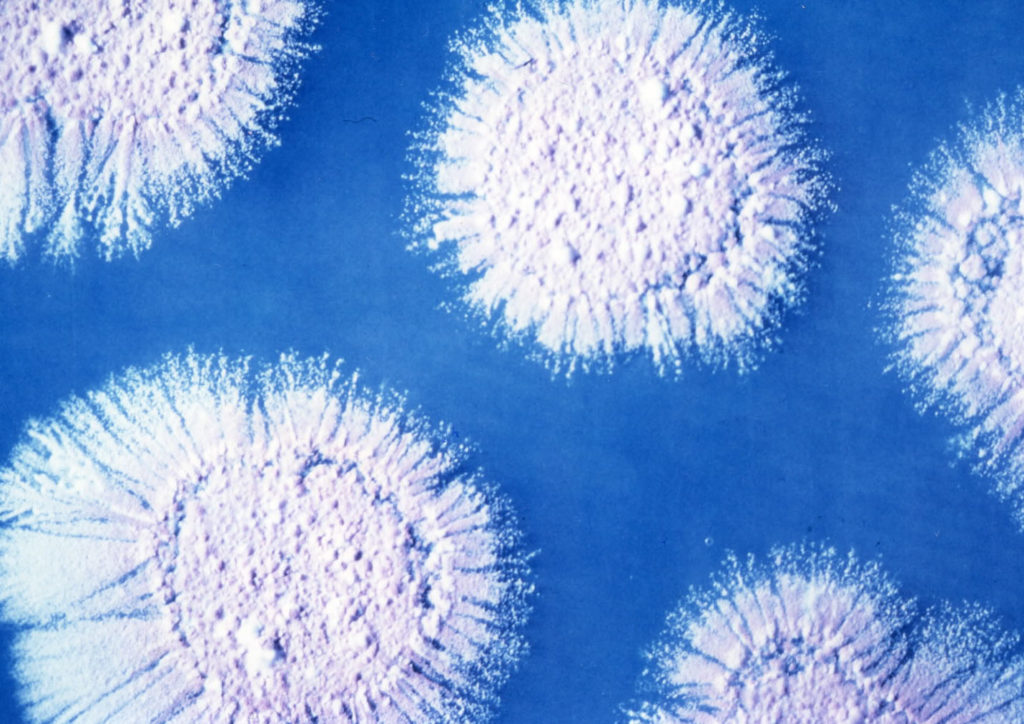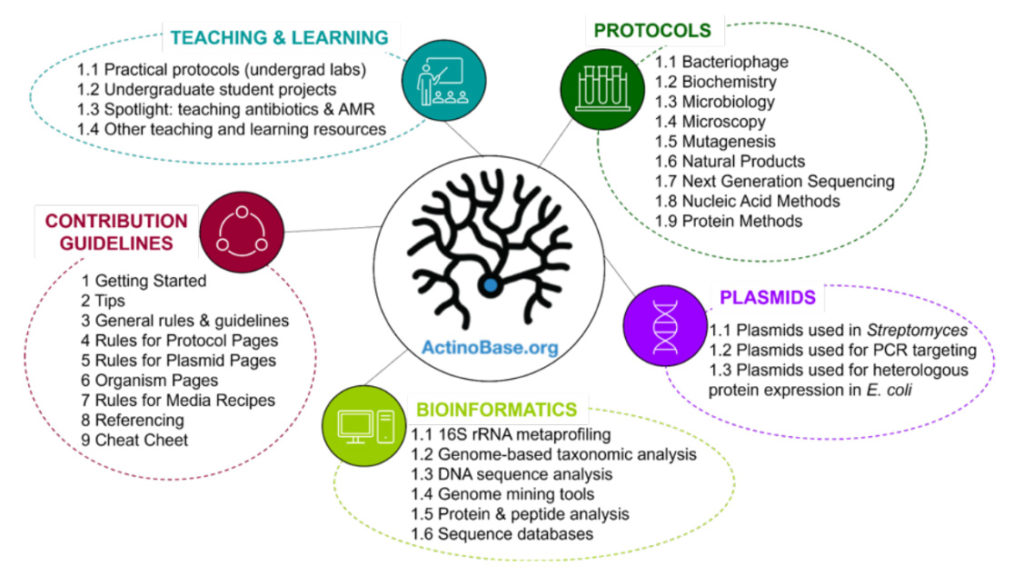ActinoBase offers a public portal of insight into special groups of actinobacteria

Streptomyces cattleya produce thienamycin as a secondary metabolite. (Image: S. Mochales, The Society of Actinomycetes Japan)

Hiroshi Otani
Streptomyces is more than just a funny word. The 500 species described within the group are responsible for roughly two-thirds of antibiotics, and a deeper understanding of the bacteria potentially holds the key to discovering new antiviral medicines and treatments for infectious disease. Streptomycetes are also abundant in soil and can be used as biocontrol agents and to promote plant growth.
It is the largest genus within Actinobacteria and therefore a cornerstone of ActinoBase, a public platform built on the knowledge of researchers studying actinomycetes and the focus of a recent paper published in Microbial Genomics.
“Studying actinomyces, especially Streptomyces and many other related organisms, requires using more specialized tools, skills and protocols,” explained Hiroshi Otani, an author on the paper and contributor to the platform. Otani is also a scientist at the U.S. Department of Energy (DOE) Joint Genome Institute (JGI), a DOE Office of Science User Facility, as well as a member of its Secondary Metabolites research group.
That group, led by JGI Director Nigel Mouncey, has launched its Secondary Metabolite Collaboratory, currently in beta form as the group seeks early feedback. The SMC web platform and associated user-available API’s offer a space to not just store data, but for the community to discuss those data and make publicly-visible comments. Its purpose is to facilitate open scientific discussions and connect users to one another.
The aim of ActinoBase, originally launched by the UK’s John Innes Centre, is to connect the global community of researchers studying actinobacteria to share information and data. The filamentous actinobacteria are of particular interest due to their complex developmental life cycles and diverse specialized metabolism. (Hear ActinoBase’s site editor Kate Duncan in the JGI Natural Prodcast podcast, where she talks about this community resource.)
“Most people study actinomycetes because they produce a very wide variety of chemical compounds as secondary metabolites,” Otani continued. “… There are still so many chemical compounds that have not been discovered that can be produced as secondary metabolites by actinomycetes.”
ActinoBase is tailored to help users overcome challenges working with actinobacteria and serves as a freely accessible resource that taps into a global network of researchers with a broad range of experience in this field.
Publication:
- Feeney MA et al. ActinoBase: tools and protocols for researchers working on Streptomyces and other filamentous actinobacteria. Microbial Genomics. 01 July 2022. doi:10.1099/mgen.0.000824
Related Links:
- ActinoBase community portal
- ActinoBase on Youtube
- JGI Secondary Metabolite research group
- JGI Secondary Metabolite Collaboratory
- The JGI’s Natural Prodcast featuring Kate Duncan of the University of Strathclyde on ActinoBase and secondary metabolites
Byline: Allison Joy
